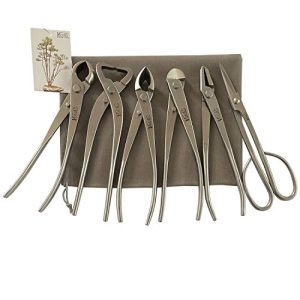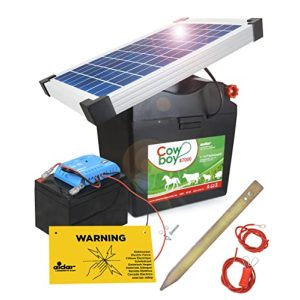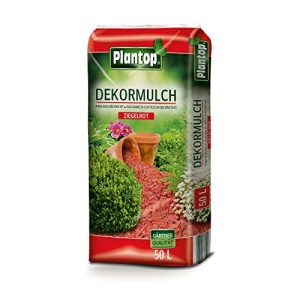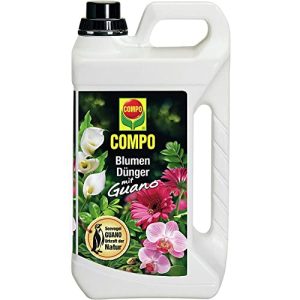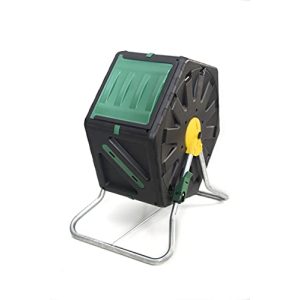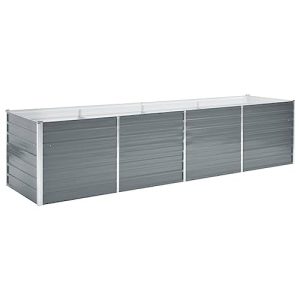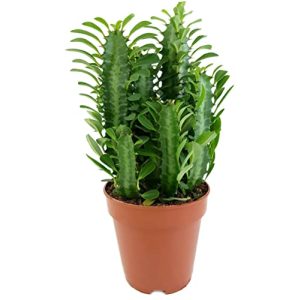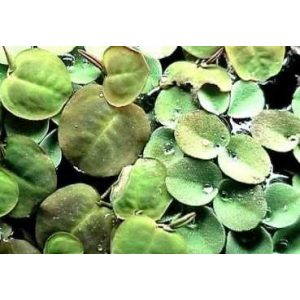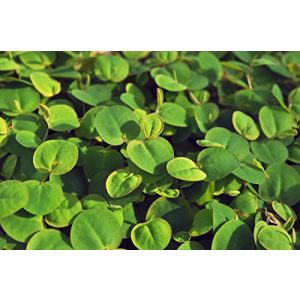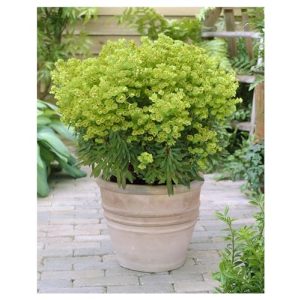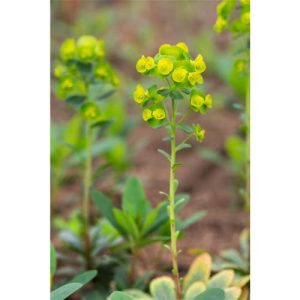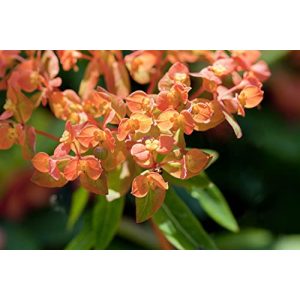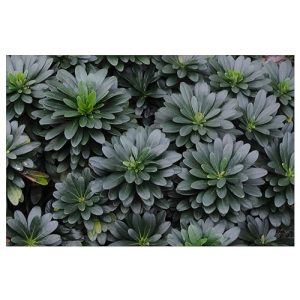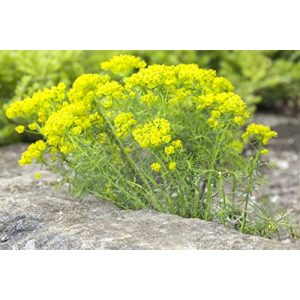Find your ideal spurge with our test & comparison
Test winners and price-performance highlights: Everything you need to know about spurge
- Spurge is a plant species known for its atypical beauty and rich medicinal properties. This unique plant, which comes in many forms, provides an attractive focal point in any garden or interior.
- With its fascinating ability to thrive in both dry and wet environments, spurge demonstrates its remarkable adaptability. It also reveals wonderful health benefits, of which skin care and pain relief are just a few.
- The presence of spurge in the plant market highlights the wide range of the plant world and its diverse functions. Their growing popularity demonstrates the importance of sustainable and health-promoting elements in today's life.
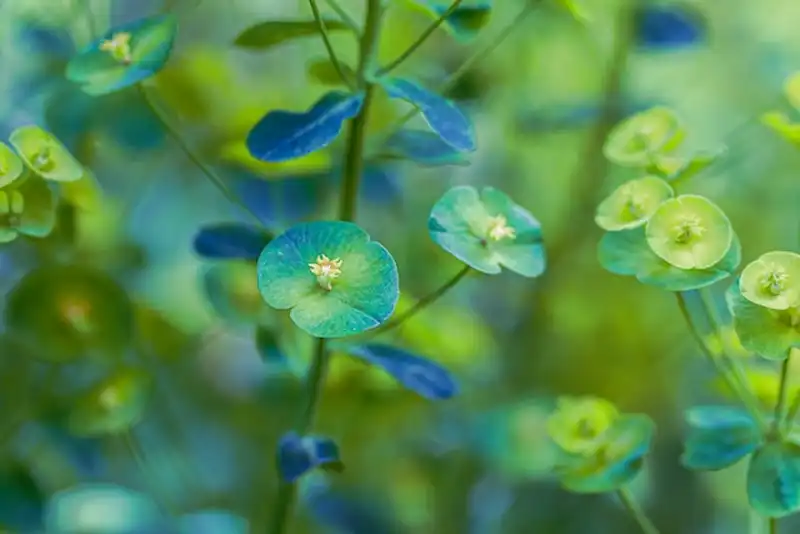
Spurge: useful use, effects & recommendations from experts
As a garden enthusiast, I have been an admirer of the over the years Milkweed, also known as euphorbia, become. The fascination with this genus of plants is rooted in its remarkable versatility and diverse uses. In our home gardens it is not just decorative Element on, but also reveals theirs healing power. The value of the Milkweed as a medicinal plant as well as theirs care Tips and Expert recommendations are therefore the focus of my interest and make them a special part of the Flora.
Buying Overview: Your Guide to Spurge
- MilkweedAlso euphorbia called, is a plant with high adaptability and decorative effect.
- The healing power Spurge is used in traditional medicine and as medicinal plant valued.
- care Tips are essential for the healthy development of spurge and ensure its longevity Garden.
- Expert recommendations emphasize the need for a suitable location and adapted irrigation.
- Choosing the type of milkweed based on the conditions of the location contributes significantly to garden success.
Amazon: Spurge – Discover the fascinating diversity of these exotic plants
- Euphorbia amygdaloides 'Purpurea' is a bushy, loosely growing plant that grows between 30 cm to...
- This wintergreen perennial has lanceolate leaves that are an attractive dark red color.
- Winter protection is not necessary for the almond-leaved garden spurge 'Purpurea'. She...
The diversity of spurge in home gardens
The world of Spurge species is incredibly colorful and versatile. Every gardener can find the right one for his location euphorbia find. Surrounded by rocks, dry stone walls and pebble paths, succulents like spurge reveal their full beauty and fit seamlessly into the landscape Rock garden .
Suitable locations for different types of milkweed
Not every type of milkweed requires the same growing conditions. While some species prefer a shady location, species like this thrive Cypress spurge (euphorbia cyparissias) or the Steppen Spurge (Euphorbia seguieriana ssp. niciciana) shows its full splendor particularly well in full Sun of a Mediterranean garden.
Roller Spurge: A highlight in the rock garden
As one of the most fascinating plants for dry, sunny locations Roller spurge (Euphorbia myrsinites). Their grey-blue leaf rollers and yellow-green flowers form a fascinating sight that will delight everyone Rock garden enriched.
Cypress spurge and steppe spurge in bloom
The local one Cypress spurge as well as the persistent Steppen Spurge show their impressive flowers from summer until deep into autumn. If you offer them a sunny location on a well-drained surface ground, they thank you with lush, bushy growth - a feast for the eyes of every garden lover.
Milkweed Care Tips
As someone who is intensively involved with the... Caring for Milkweed I would like to share my insights and best practices. Milkweed Care Doesn't require much effort, but some important care instructions shouldn't be ignored. One of them is paying attention to winter precautions hardy spurge, da give Plants despite their robust nature can be sensitive to frost.
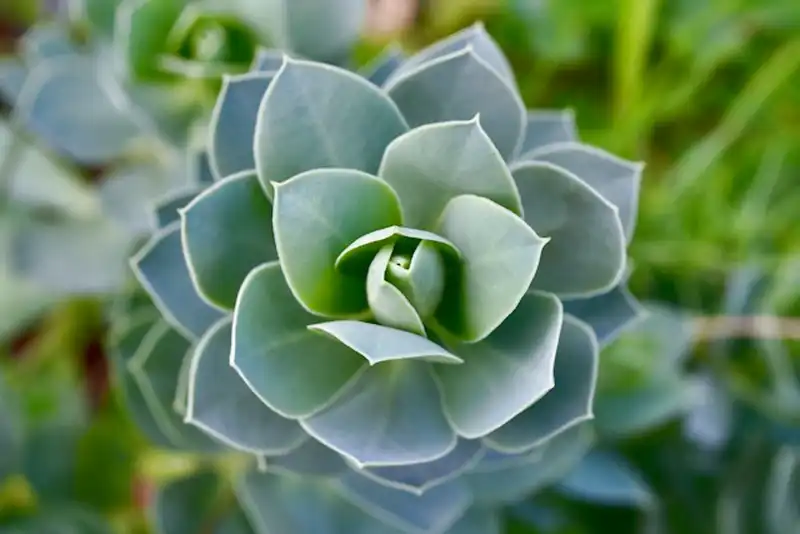
Plants in the spurge family are often characterized by their distinctive flower heads and their juicy, milky juices.
A key aspect is this Spurge cut. This pruning not only promotes a healthy growth habit, but also helps keep the plant rejuvenated and full of blooms. However, this should be done carefully so as not to damage the plant. Below are some relevant steps for that Caring for Milkweed listed:
- Choose a sunny location where the plant can fully develop its natural robustness.
- Look for well-drained ones Earth, to avoid waterlogging, which could cause root rot.
- Prune annually, ideally after flowering, to encourage growth and keep the plant compact.
- Keep an eye on winter protection: Mulch or leaves can help protect plants from extreme temperatures.
By following these simple but effective guidelines, you can ensure that your milkweed thrives and delights you with its quirky beauty.
Amazon Spurge: Add an exotic touch to your garden with these unique plants
Choice of location and soil conditions for milkweed
As a passionate gardener, I have noticed that the impressive diversity of spurge has certain requirements Spurge location and Milkweed Earth provides. This exotic plant thrives primarily in places that can mimic its natural habitat.
Ideal locations for spurge biodiversity
The many different types of spurge find ideal locations, particularly in sunny areas of a garden. A good tip for beginners and experienced gardeners alike is to create a rock garden, which not only benefits heat- and light-loving milkweed species, but also creates an attractive visual accent.
Permeable soils favor optimal growth
In order to ensure optimal growth, it is essential that Succulent plant in well-drained to plant soil. This avoids stagnant water, which could damage the roots and thus inhibit the growth of the plant.
- Use of permeable substrate such as gravel or sand
- Enriching the soil with compost to improve nutrient quality
- Choosing the right place to ensure the necessary sunlight
By taking these measures, you will ensure that your spurge plants have a location that will help them thrive and at the same time emphasize the exotic flair of your garden.
Spurge and its effect on the environment
My personal observations and experiences with Spurge effect have shown, that this plant far more than just an aesthetic accent in the garden. especially the healing effects of milkweed has long been known and valued in folk medicine. Milkweed However, it is also known for its milky sap, which when it comes into contact with the skin Spurge allergy can trigger. Particular care is therefore required when handling it, as the juice is... Spurge poison can work.
The following aspects are particularly noteworthy:
- Defense against pests: Some species of spurge, chief among them Euphorbia palustris, can help keep garden pests such as slugs away by excreting certain substances in the soil.
- Healing properties: The use of spurge in traditional medicine ranges from relieving skin diseases to supporting wound healing.
- Handling the latex: When pruning or transplanting milkweed, it is important to wear gloves to avoid skin irritation and prevent potential allergy.
Please note: Any contact with the milky sap of spurge should be done with care and if any reactions occur, it is advisable to consult a doctor immediately.
Get your milkweed on Amazon now and let your garden bloom with bright colors
- Euphorbia x martinii / bastard box spurge / growth height: approx. 60 to 80 cm / pot size: 9x9...
- Location: Sun / Flowering period: April - June / Soil: gravelly to loamy / Water requirement: little to...
- From April onwards, the bastard spurge adorns itself with yellow flowers. This evergreen plant...
Medicinal Uses of Spurge
As a long-time expert in the field of Naturopathy I always come across Euphorbia, better known as spurge, because of its... Spurge healing properties is appreciated. The plant, with its diverse species, has considerable potential in alternative medicine. Especially the medicinal uses of milkweed fascinated by the range of application areas. However, it should be noted that the milky sap of spurge can be irritating, so professional use is essential.
Traditional uses in naturopathy
Over the centuries, Euphorbia has taken on different roles in folk medicine. That's how it became Spurge medicine used, among other things, to treat skin diseases or as a natural remedy for respiratory problems. My encounters with alternative practitioners and my own research have shown me how deeply rooted this natural product is in ancient healing traditions.
Interesting facts about the healing properties of milkweed
An aspect that... Spurge healing properties What makes it particularly interesting is the research that shows that certain components of spurge may have anti-inflammatory and pain-relieving properties. Although we are still a long way from speaking of a general therapeutic recommendation, this opens up an exciting field for future scientific work.
Garden design with spurge
The creative possibilities that Spurge in the garden offers are more than impressive. With its diverse colors and unusual shapes, it contributes significantly to the aesthetic design and creates an impressive garden image. As Succulent plant spurge It not only suits dry locations, but also stands out for its adaptability.
The combination with other plants for harmonious scenes
The Combine milkweed with plants such as blue rue or hornwort is a joy for every gardener. These compositions create a colorful Panorama, which particularly contrasts with the structuring form of spurge. Especially with seasonal changes, these partnerships offer a continuously changing spectacle in the Garden design with spurge.
Long-lasting plantings through the right choice of location
A key to lasting beauty is this Choosing the right location for milkweed in the garden. A location with enough sunlight, good drainage and low maintenance is ideal to maximize the charm of this Succulent plant spurge to be preserved permanently. At the same time, garden lovers enjoy the spectacle when the foliage of the swamp spurge transforms into rich colors in autumn, thereby adding an additional accent.
Amazon Spurge: Awaken the magic of the desert in your own home
- Climate-neutral shipping with DHL GoGreen
Spurge: An exotic plant at home
As a passionate plant lover, I am fascinated by them Spurge houseplant, which brings an exotic touch to every living space. Their distinctive shapes and bright colors make them a unique addition to every apartment. Around the Exotic houseplant spurge Some people should be able to effectively stage it and at the same time ensure their well-being care Tips be followed.
But How to care for a spurge correct? Light and temperature play a crucial role. It loves bright locations, but without direct midday sun. Their preferred temperature conditions include warm daytime temperatures and slightly cooler ones Nights. Another important aspect is protection against drafts, which should not be underestimated, especially in the winter months.
- Light requirements: Bright but not direct sunlight
- Temperature: Warm days and cooler nights
- Location: Avoid drafts, ideal placement in Living room or winter garden
Below I will explain the necessary steps that are important for optimal growth and a long lifespan of spurge:
- Choose a bright location without direct summer midday sun.
- Make sure the room temperature is constant, especially when it gets colder outside.
- Avoid exposing your milkweed to drafts for long periods of time.
With these tips you can manage your... Spurge houseplant to keep healthy and enjoy their exotic beauty.
Immerse yourself in the world of milkweed with seeds from Amazon
- Individual aquarium design with our aquatic plants
- Aquarium plants reduce algae growth
- rare floating plants
Watering and fertilizing milkweed
As a passionate plant connoisseur, I know how crucial an adapted water and nutrient supply is for the vitality of spurge. This Succulent plant Plant requires careful care that takes into account the special properties of spurge. It is important to find a balance that avoids both over- and under-supply so that the plant thrives.
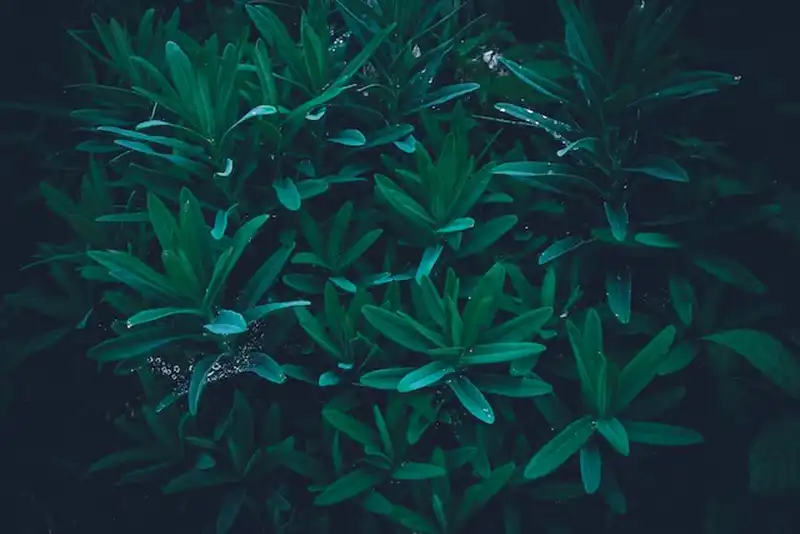
Some types of milkweed can be poisonous and should therefore be handled with caution.
Proper watering for a healthy plant
Watering the milkweed requires sensitivity. As a rule, the soil should be allowed to dry slightly between waterings, although the dry period to be observed depends on the respective Euphorbia species and its location conditions. To avoid waterlogging, good drainage in the pot is necessary. This promotes root health and prevents rot.
Fertilize – but how? Recommendations for milkweed
For fertilizing milkweed, I recommend special succulent fertilizers that are commercially available. These contain a balanced ratio of necessary nutrients and should be used during the growing season, i.e. mainly in spring and summer. One or two fertilizer applications during this time support the plant without the risk of over-fertilization. Also the Propagation by cuttings of spurge works better if the mother plant is well-fed and healthy.
FAQ
How can milkweed be used sensibly and what effect does it have?
Spurge can be used in various ways. It is very popular as an ornamental plant in the garden or as an exotic houseplant and brings a unique character to the plant design. You will also get one in naturopathy healing power attributed, for example in the treatment of skin diseases. However, they should always be used with caution due to the toxic components.
Which particular locations are suitable for different types of milkweed?
The different types of spurge have different requirements for their location. While species like the roller spurge prefer dry, sunny locations, others, such as the Cypress spurge, even with less sun. It is important to consider the specific needs of each species to allow for optimal growth.
What tips are there for caring for spurge?
In general, spurge requires little care. However, it should be planted in a suitable location and protected from waterlogging. Important care tips include watering regularly, but only enough to allow the soil to dry out between waterings, and fertilizing with succulent preparations during the growth phase.
How is the choice of location and soil conditions optimized for milkweed?
A sunny location with well-drained soil is ideal for milkweed. Both the species diversity and the soil conditions of the spurge require a carefully considered selection of the location. A stony or sandy subsoil supports growth and prevents waterlogging, which is so harmful to this type of plant.
What effect does spurge have on the environment?
Spurge can have positive effects on the environment. Some Species can deter pests or others Protect plants from them. However, spurge also contains toxic latex that can cause skin irritation or allergies, so care should be taken when handling it.
How is milkweed used in medicine?
In naturopathy, spurge is traditionally used to treat warts and certain skin diseases. However, due to its potentially skin-irritating and toxic ingredients, it should not be used without expert guidance.
How do you design a garden with milkweed?
Spurge can be combined very well with other dry plants or succulents. It contributes to the aesthetic structuring of the garden and, depending on the type, can even enhance the image in winter. A harmonious garden design can be achieved by combining them with plants that have similar location requirements.
How do you care for milkweed as a houseplant?
As a houseplant, spurge requires bright locations and careful watering. It is important to ensure that there is no waterlogging and that the plant is kept cooler in the winter months. This supports its natural growth behavior and keeps the plant healthy.
How do you properly water and fertilize milkweed?
Spurge should be watered moderately but regularly. It is important to ensure that the water can drain away easily and that the root ball is allowed to dry between waterings. When fertilizing, special succulent fertilizers should be used to provide the plant with all the necessary nutrients without over-fertilizing it.

